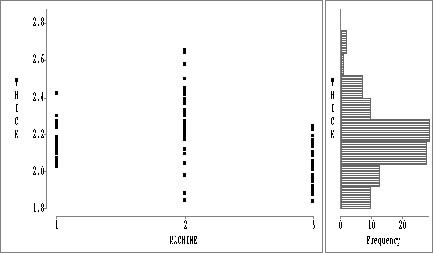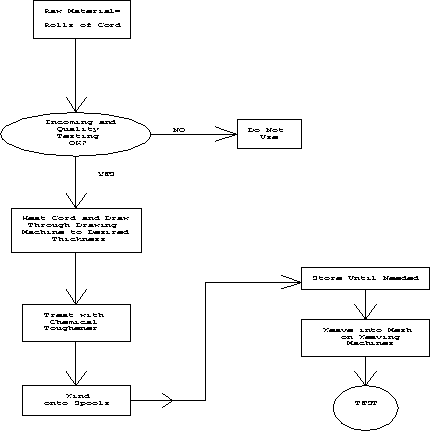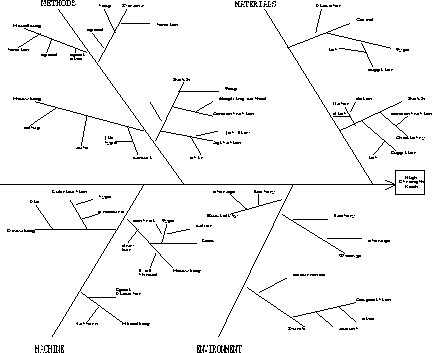Now that we have reason to believe the process is stable, we would like to look more closely at the sources of process variation. Process stability simplifies things, because we do not need to look at the development of the process over time. The graphical tool we will use in identifying sources of variation is the stratified plot. In a stratified plot, the data are broken up into smaller groups or strata with the goal of looking for differences between the strata and within each stratum. The simplest stratified plot is just an X-Y plot with the measured variable (here the washer thickness) on the vertical axis, and a variable describing the different strata on the horizontal axis.
A stratified plot is displayed on the left in Figure ![]() , and a
horizontal bar chart is displayed on the right. Notice that the vertical axes
coincide on these two plots.
, and a
horizontal bar chart is displayed on the right. Notice that the vertical axes
coincide on these two plots.
The bar chart displays the overall pattern of variation in the washer thicknesses. The stratified plot stratifies the data by MACHINE and allows us to compare the center and spread of the washer thicknesses produced by the the different machines. Do they differ greatly, or are they nearly the same? Is the difference between the centers of the thicknesses for the individual machines (also called the between variation) large compared with the spread of the thicknesses within each machine (also called the within variation)? Answering this last question does two important things.

Figure: Stratified Plot of Thickness versus Machine with Horizontal Bar Chart

Figure: Process Flow Diagram for Mesh Netting Problem

Figure: Ishikawa Diagram for Mesh Netting Problem
On the stratified plot we notice that not all machines show equal variation in washer thickness. Machine 2 shows much greater within variation than either machine 1 or 3, which themselves display comparable variation. In terms of between variation, the machine 1 values seem to cluster equally around the 2.16 mm specification, while the center of the machine 2 thicknesses is higher and that of the machine 3 thicknesses is lower. The greater part of the overall variation seems to be accounted for by the within variation, particularly within machine 2. The between variation between machine 3 and the other two machines also seems to account for a substantial part of the total variation in the data.
Based on this analysis of the variation in the thicknesses: